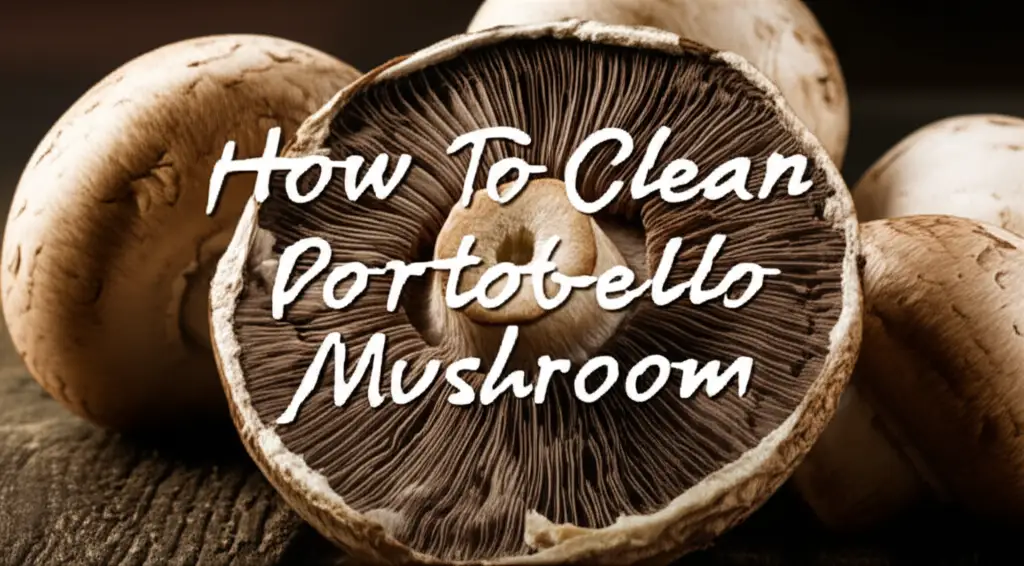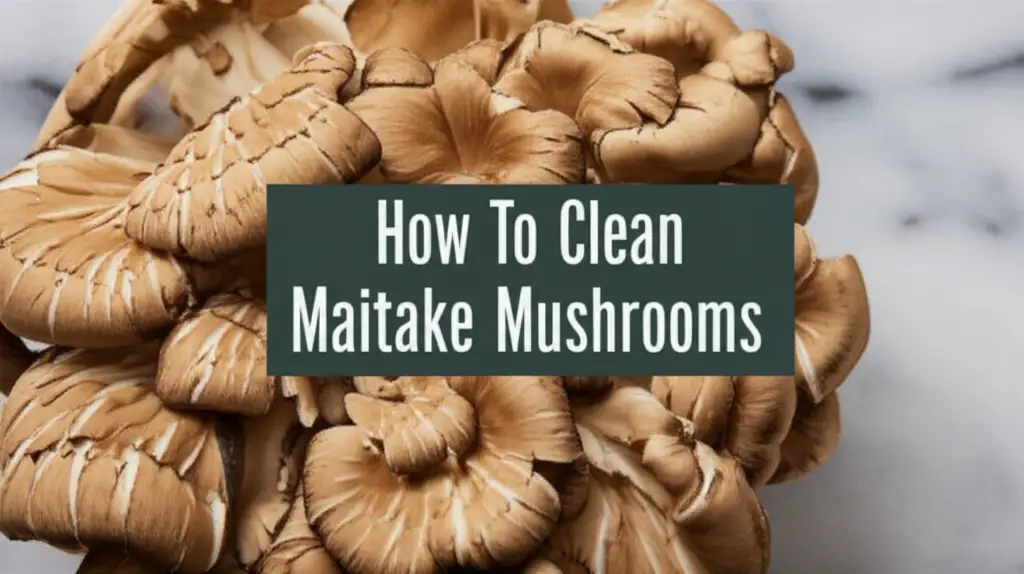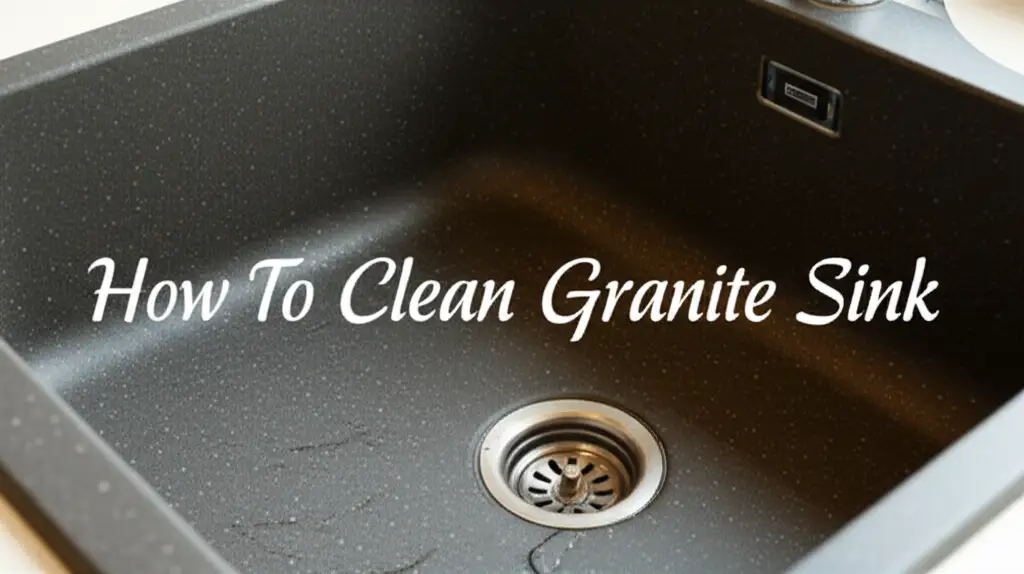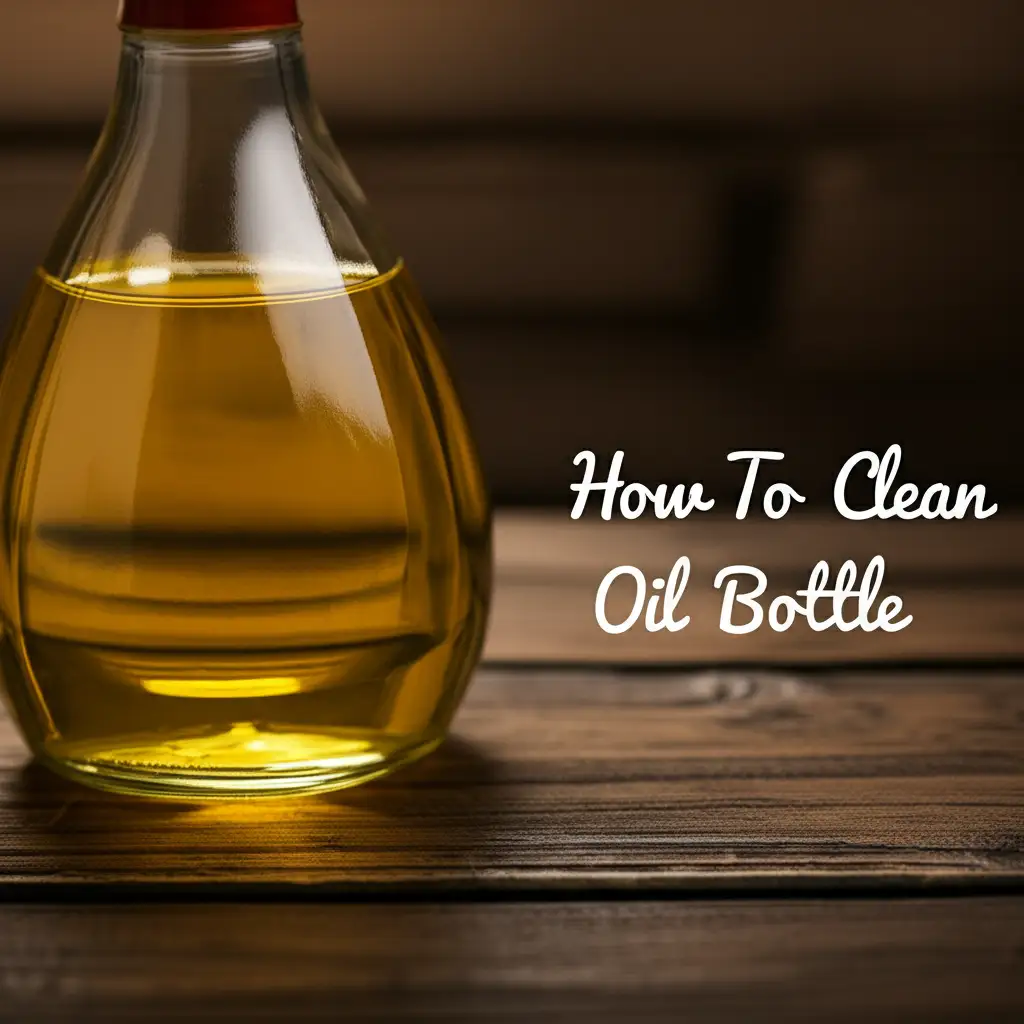· Kitchen Cleaning · 11 min read
How To Clean Portobello Mushroom

Learn How To Clean Portobello Mushroom Like a Pro
Imagine a hearty Portobello mushroom cap, ready for grilling or stuffing. Before it hits your plate, you need to prepare it. Knowing how to clean Portobello mushroom caps properly ensures a delicious, grit-free meal. Many people wonder if they should wash mushrooms with water. This article explains the best methods for cleaning Portobello mushrooms. We cover dry cleaning, light rinsing, and handling those dark gills.
You will learn what tools to use. We also discuss common mistakes to avoid. My goal is to help you achieve perfectly clean mushrooms every time. Let’s get started on your path to better mushroom preparation.
Takeaway:
- Always clean Portobello mushrooms before cooking.
- The dry wiping method is usually best to avoid excess moisture.
- Remove gills if a lighter color or less “earthy” flavor is desired.
- Thoroughly dry mushrooms after any cleaning to ensure good browning.
To properly clean Portobello mushrooms, gently wipe their caps with a damp cloth or paper towel to remove dirt. Use a soft brush for stubborn bits. You can carefully scrape out the gills if your recipe requires. Always ensure the mushroom is dry before cooking to get the best texture.
Why Clean Portobello Mushrooms? Unveiling the Importance
You just brought home fresh Portobello mushrooms from the market. They look big and inviting. But have you thought about what might be on their surfaces? Portobello mushrooms grow in a substrate that often contains dirt and peat. This material sticks to the caps and stems. Eating this dirt can ruin your meal. It adds an unpleasant gritty texture.
Cleaning mushrooms removes these visible contaminants. It also helps remove any lingering unseen residues. Growers sometimes use specific materials or methods during cultivation. A quick clean makes sure your mushrooms are ready for safe eating. You want your culinary creations to taste pure. Therefore, cleaning is a vital first step.
Beyond grit, cleaning also prepares the mushroom for cooking. A clean surface allows for even cooking and proper browning. If dirt remains, it can prevent good contact with your cooking surface. This leads to unevenly cooked or bland mushrooms. Taking a few minutes to clean your Portobellos makes a big difference. It ensures your meal is both safe and delicious. This simple task is a foundational step in good kitchen hygiene.
Essential Tools for Cleaning Portobello Mushrooms
Gathering your tools before you start makes the cleaning process simple. You do not need many specialized items. Most of what you need you likely already have in your kitchen. Having the right tools ensures you can clean your Portobello mushrooms effectively. It helps you avoid damaging their delicate structure.
First, you will want a soft brush. A dedicated mushroom brush works best. It has very soft bristles that gently remove dirt without scratching the mushroom. If you do not have a mushroom brush, a soft toothbrush (new and clean, please!) or even a pastry brush can work. The key is softness to prevent bruising.
Next, have plenty of paper towels or a clean, damp cloth ready. These are essential for wiping away loosened dirt. They also help absorb excess moisture. I always keep a roll of paper towels nearby when handling produce. A small spoon, like a teaspoon, can also be helpful. This is for gently scraping out the gills if your recipe calls for it. Lastly, a cutting board provides a stable, clean surface for working. This set of tools prepares you for success.
The Best Way to Clean Portobello Mushrooms: Dry Wiping Method
The dry wiping method is the preferred way to clean Portobello mushrooms. Mushrooms act like sponges. They soak up water quickly. Too much water can make them soggy. This stops them from browning well when cooked. A soggy mushroom loses its firm texture. It also dilutes its rich flavor.
This method uses minimal moisture. You focus on removing dirt physically. This keeps the mushroom’s integrity intact. It lets you achieve a perfectly cooked result. I always start with this method for my Portobellos. It gives me the best texture.
How to Gently Wipe Portobello Caps
Start with one mushroom at a time. Hold the mushroom cap firmly but gently. Take your soft brush. Brush away any visible dirt or debris from the top of the cap. Use light, sweeping motions. You do not need to scrub hard. The goal is to dislodge loose particles.
Next, grab a clean, slightly damp paper towel or cloth. Make sure it is only damp, not wet. Gently wipe the entire surface of the mushroom cap. You are removing any remaining dirt or dust. Change the paper towel or cloth as it gets dirty. Continue wiping until the cap looks clean. This method preserves the mushroom’s natural texture. It also keeps its flavor concentrated.
Cleaning the Portobello Stem
Many recipes require you to remove the stem from a Portobello mushroom. The stem is often tougher than the cap. It can also hold more dirt. Even if you plan to discard it, cleaning the stem area is important. You want to avoid transferring dirt to the cap.
Hold the mushroom cap steady. Gently twist the stem until it detaches from the cap. Sometimes, you can also use a small paring knife to cut it cleanly. After removing the stem, inspect the base of the cap where the stem was attached. Use your damp paper towel or brush to wipe away any dirt there. Some people like to use the stem in stocks or soups. If you do, clean the stem separately by brushing off any dirt. This ensures all parts of your mushroom are ready for use.
When a Light Rinse is Okay: Understanding Moisture
While dry cleaning is often best, sometimes a Portobello mushroom needs a little more help. Some mushrooms arrive extra muddy from the grocery store. In these cases, a very quick rinse can be acceptable. The key is to make it brief and immediate. You want to minimize water absorption. I only use this method if the dry wipe is not enough.
A quick rinse means holding the mushroom under a gentle stream of cool water. Do this for only a few seconds. Do not let the mushroom sit in water. Water can seep into the mushroom’s porous structure very fast. This makes the mushroom absorb too much liquid. It changes the mushroom’s texture and cooking properties. This brief rinse washes away heavy dirt. You then need to dry the mushroom thoroughly and immediately.
After a quick rinse, the drying step becomes even more critical. You must remove all surface moisture. Excess water prevents good caramelization when cooking. It also dilutes the mushroom’s flavor. So, if you must rinse, remember it’s a very short dip. Then, the drying process begins right away. This balancing act helps you get clean mushrooms. It also ensures they cook beautifully. For other mushroom types, like how to clean lions mane mushroom, similar principles apply regarding moisture.
To Remove or Not to Remove: Handling Portobello Gills
Portobello mushrooms have dark, feathery gills on their underside. These gills contain spores. They are completely edible. You do not have to remove them. However, many recipes and chefs recommend removing them. There are good reasons for this.
The gills contain a lot of moisture. They also have a very earthy, almost bitter flavor. This flavor can be too strong for some dishes. Removing the gills also prevents your dish from turning dark. The dark spores from the gills can stain other ingredients. They make sauces and lighter ingredients look muddy. For a cleaner appearance and milder flavor, gill removal is a good idea. I usually remove them for visual appeal.
To remove the gills, use a spoon. A regular teaspoon works well. Hold the mushroom cap upside down. Gently scrape the gills from the center outwards. The gills will come out easily. Discard the removed gills. The inside of the cap will now look smooth and lighter in color. This step is optional. It depends on your preference and the recipe you are making.
Drying Your Portobello Mushrooms: A Crucial Step
After cleaning your Portobello mushrooms, the most critical step is drying them completely. Whether you used a dry wipe or a quick rinse, moisture remains on the surface. Excess moisture is the enemy of good mushroom cooking. It prevents the mushrooms from browning properly. Instead of getting a nice sear, they will steam. This leaves them rubbery and unappealing.
Place the cleaned mushrooms on a layer of clean paper towels. You can place them gill-side down or cap-side down. Then, place another layer of paper towels on top. Gently press down to absorb moisture. You might need to change the paper towels if they become too wet. Let the mushrooms air dry for a short period if needed. I often leave them on the counter for 15-20 minutes. This allows any hidden moisture to evaporate.
The goal is a completely dry mushroom surface. This dryness ensures that when the mushroom hits a hot pan, it sears beautifully. It develops that rich, caramelized flavor everyone loves. A properly dried mushroom delivers superior taste and texture. This step cannot be skipped for best results. Also, ensure your pan is clean and ready for cooking. A clean pan surface helps with good browning, much like how to clean bottom of pan ensures your cookware is ready for use.
Common Mistakes When Cleaning Portobello Mushrooms
Cleaning Portobello mushrooms seems simple, but common errors can reduce their quality. Avoiding these mistakes ensures your mushrooms are perfectly ready for cooking. I have made some of these mistakes myself in the past. Learning from them makes you a better cook.
One major mistake is over-washing. People often think more water means cleaner food. For mushrooms, this is not true. Mushrooms are like sponges; they absorb water quickly. Excessive washing makes them soggy. This water then releases during cooking. The mushrooms will steam instead of sear. They become rubbery and lose their firm texture. Always use the dry wiping method first. Only rinse briefly if absolutely necessary.
Another mistake is not drying them thoroughly. Even a brief rinse requires careful drying. Any remaining surface moisture will hinder browning. This results in pale, steamed mushrooms instead of golden, caramelized ones. Use plenty of paper towels. Press gently to absorb all moisture. Giving them a few minutes to air dry can also help.
Finally, some people scrub too aggressively. Portobello mushrooms are delicate. Harsh scrubbing can bruise them. It damages their texture. Always use a soft brush or a gentle wiping motion. You want to remove dirt, not strip the mushroom’s surface. Gentle care preserves their natural beauty and taste. Avoiding these common pitfalls will give you perfect mushrooms every time.
FAQ Section
Q1: Can I wash Portobello mushrooms with soap?
No, never wash Portobello mushrooms with soap. Soap residues are harmful. They can also ruin the mushroom’s natural flavor. Stick to plain water and gentle wiping. This keeps your mushrooms safe and tasty.
Q2: How long can I store Portobello mushrooms after cleaning?
It is best to clean Portobello mushrooms right before you plan to cook them. Once cleaned, especially if rinsed, they absorb moisture. This speeds up spoilage. Store uncleaned mushrooms in a paper bag in the refrigerator for up to a week.
Q3: What is the benefit of removing the gills from Portobello mushrooms?
Removing the gills gives a milder flavor and a cleaner appearance. The dark gills can release spores that stain your food. They also add a strong earthy taste some people do not prefer. It is an optional step based on your recipe and taste.
Q4: My Portobello mushrooms still feel slimy after cleaning. What did I do wrong?
Sliminess usually means they absorbed too much water or were not dried properly. You might have washed them too long. Or, you did not dry them thoroughly enough. Ensure you dry them completely with paper towels after cleaning.
Q5: Can I freeze Portobello mushrooms after cleaning?
You can freeze Portobello mushrooms, but it’s best to cook them first. Raw mushrooms freeze poorly. They become very watery and mushy when thawed. Lightly sauté them before freezing for best results.
Conclusion
Cleaning Portobello mushrooms properly is a simple step. It makes a big difference in your cooking. You learned that the dry wiping method is usually best. This keeps your mushrooms from getting soggy. We also discussed when a quick rinse is acceptable, followed by immediate, thorough drying. Remember to use a soft brush and paper towels. These tools help you remove dirt without damaging the mushroom.
Deciding whether to remove the dark gills depends on your preference. Removing them gives a cleaner look and milder flavor. Always ensure your mushrooms are completely dry before cooking. This helps them brown beautifully and taste amazing. Avoid common mistakes like over-washing or aggressive scrubbing. These simple practices ensure you prepare delicious Portobello mushrooms every time. Now you know how to clean Portobello mushroom caps like an expert. Go ahead and enjoy your next mushroom dish!
- mushroom cleaning
- portobello prep
- cleaning vegetables
- cooking mushrooms
- dry cleaning mushrooms




